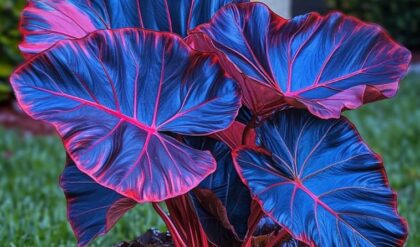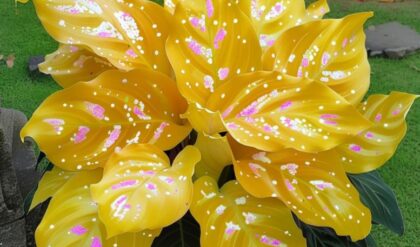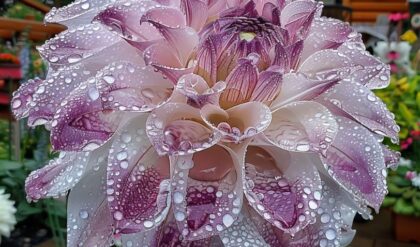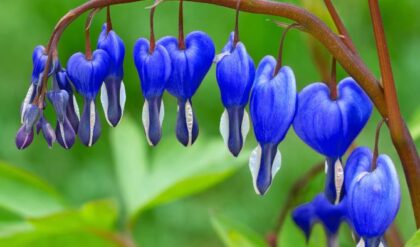The concept of the mystical rock lotus has captured popular imagination, representing a blend of nature’s beauty and human creativity. This extraordinary plant is often portrayed as defying the typical boundaries of botanical growth, emerging from rugged rocks with elegant pink blossoms and intricate roots. But what lies beneath this romanticized depiction? Is it an actual natural phenomenon or merely a figment of imagination?
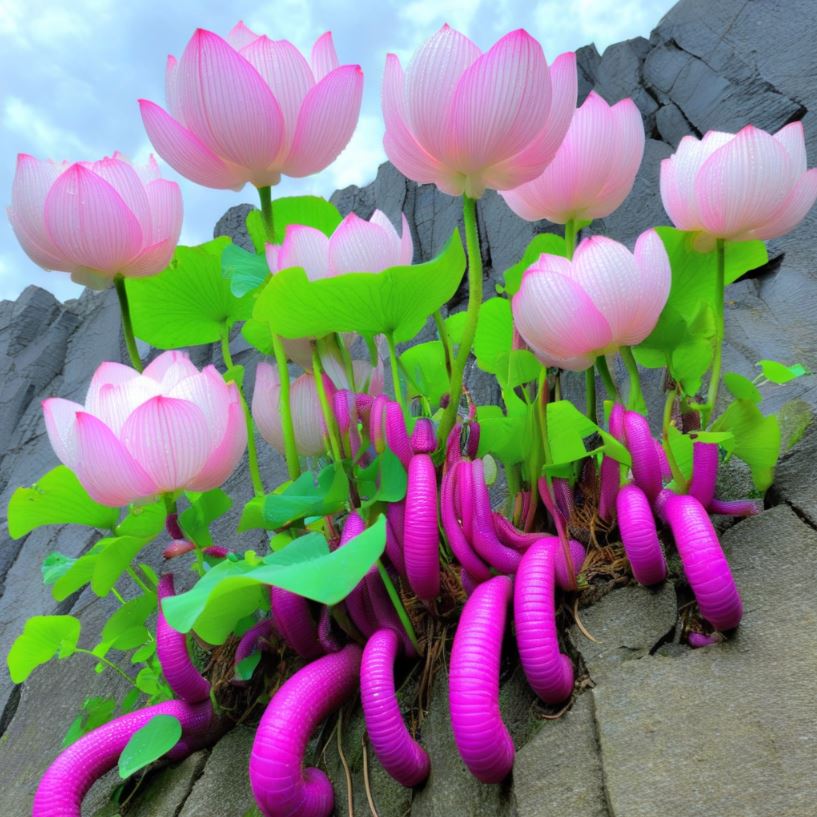
The Allure of the Mystical Rock Lotus
The mystical rock lotus is typically described as a plant that blooms delicately in harsh environments, symbolizing resilience and beauty. Its scenic depiction resonates—that of vibrant pink roots cascading down craggy rocks, lending an aesthetic contrast that calls to mind the serenity of nature amid adversity. Such imagery evokes a sense of wonder, leading one to ponder the adaptability of life forms in unyielding terrains.
Exploring the Visually Captivating Aesthetic
The visual allure of the mystical rock lotus is undeniable. Imagine a plant with delicate, vibrant pink blossoms emerging from the cracks and crevices of rugged, weathered rocks. The contrast between the soft, elegant flowers and the harsh, unyielding terrain creates a striking visual juxtaposition that captivates the viewer. This aesthetic quality is a significant contributor to the plant’s popularity and the intrigue it generates.
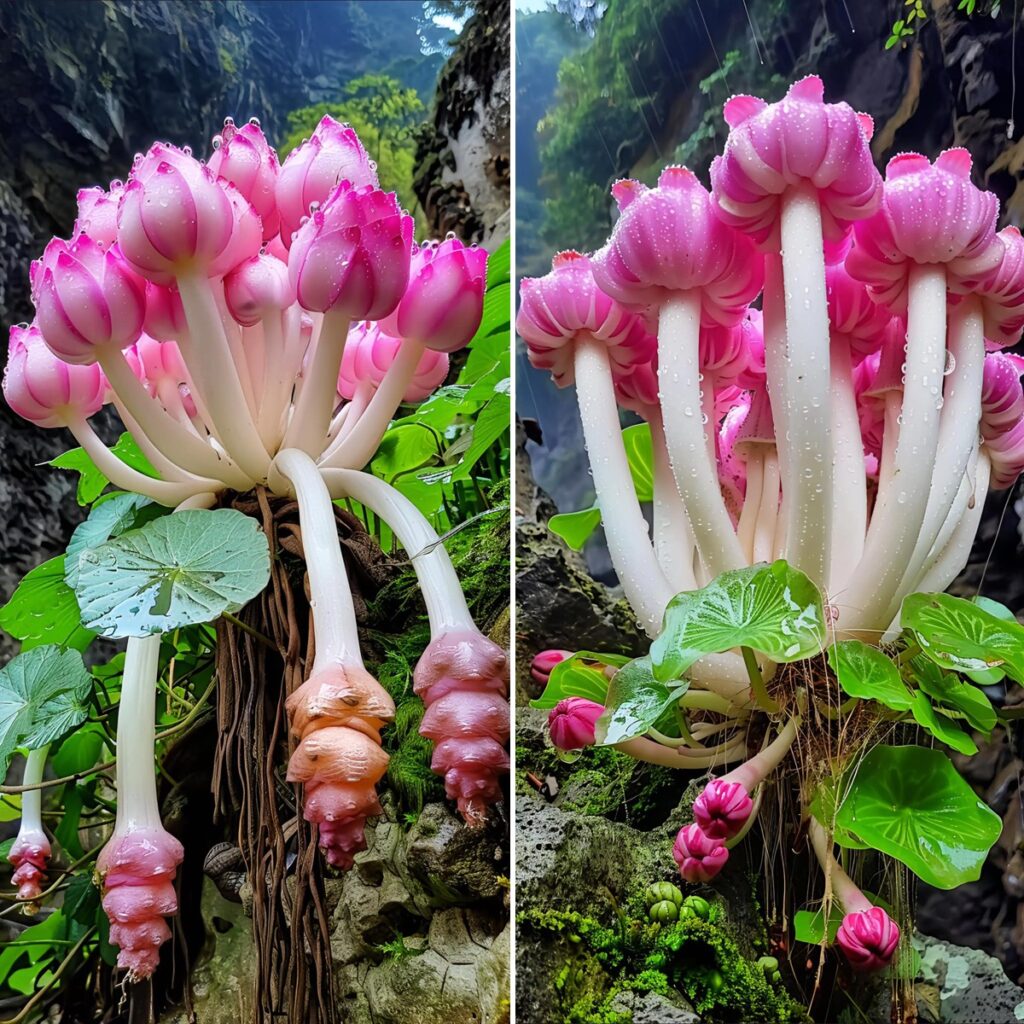
Symbolism of Resilience and Beauty
The mystical rock lotus is often imbued with symbolic meaning, representing the resilience of life and the enduring beauty of nature. The fact that this plant is purported to thrive in such inhospitable environments, defying the typical constraints of botanical growth, imbues it with a sense of wonder and reverence. This symbolic resonance is a key factor in the plant’s appeal, as it taps into our innate appreciation for the triumph of life over adversity.
The Allure of the Unfamiliar and Mysterious
The mystical rock lotus also captivates due to its aura of mystery and unfamiliarity. As a plant that seemingly defies our expectations of how nature should behave, it sparks our curiosity and imagination. The idea of a flower blooming from the cracks of a rock challenges our preconceptions and fuels our desire to understand this enigmatic phenomenon. This sense of the unknown contributes to the allure and intrigue surrounding the mystical rock lotus.

Reality Versus Imagination: Debunking the Myth
However, a deeper analysis reveals a schism between reality and myth. The article titled “The Truth Behind the Viral ‘Rock Lotus’ Plant Claim” emphasizes that while visually captivating, many claims about this plant may be overstated or entirely fictitious. In several social media posts, the rock lotus appears alongside sensational descriptions, contributing to its lore but also fostering misinformation. As we delve into the essence of this flower, we must discern whether these descriptions stem from genuine scientific observation or fanciful storytelling.
Exploring the Factual Evidence (or Lack Thereof)
When examining the claims surrounding the mystical rock lotus, it becomes evident that there is a paucity of scientific evidence supporting its existence as a distinct species. Despite the abundance of visually striking images and captivating narratives online, the scientific community has yet to provide conclusive proof of this plant’s existence in the natural world. This lack of verifiable data raises questions about the authenticity of the claims and the need for further investigation.
Distinguishing Fact from Fiction
As intriguing as the concept of the mystical rock lotus may be, it is essential to recognize the distinction between artistic representation and factual reporting. Many of the images and stories circulating online appear to be the result of creative interpretation and digital manipulation, rather than documentation of a real-world phenomenon. This blurring of the lines between art and reality can contribute to the propagation of misinformation and the perpetuation of botanical myths.

The Importance of Critical Thinking
In the face of such captivating imagery and compelling narratives, it is crucial to approach the mystical rock lotus with a critical eye. Viewers must be discerning in their assessment of the information presented, questioning the sources, verifying the claims, and maintaining a skeptical mindset. This level of critical thinking is essential in separating fact from fiction and ensuring that our understanding of the natural world is grounded in scientific evidence rather than romanticized speculation.
The Impact of Social Media on Botanical Myths
Social platforms like Facebook and Instagram abound with images and narratives surrounding the mystical rock lotus, fusing artistic representation with misleading authenticity. This exemplifies the potent role social media plays in shaping public perceptions of nature. When visual platforms showcase artistic interpretations of flora, viewers may unconsciously conflate art with reality, blurring the lines between fact and fiction. This evolution of botanical folklore raises questions about the responsibility creators have in disseminating accurate information about the natural world.
The Allure of Visually Captivating Content
The visual appeal of the mystical rock lotus is a significant factor in its widespread dissemination on social media. Stunning images of these vibrant flowers cascading down rugged rock formations are often accompanied by captivating captions and narratives, creating a sense of awe and intrigue. This visual allure can be a double-edged sword, as it can simultaneously captivate viewers and lead them to accept the presented information at face value, without critical examination.
The Propagation of Misinformation
As the mystical rock lotus gains traction on social media, the potential for the spread of misinformation increases exponentially. Unverified claims, embellished descriptions, and digitally manipulated images can all contribute to the perpetuation of botanical myths, blurring the line between fact and fiction. This can have far-reaching consequences, as it shapes public perception and understanding of the natural world, potentially leading to the dissemination of false information.
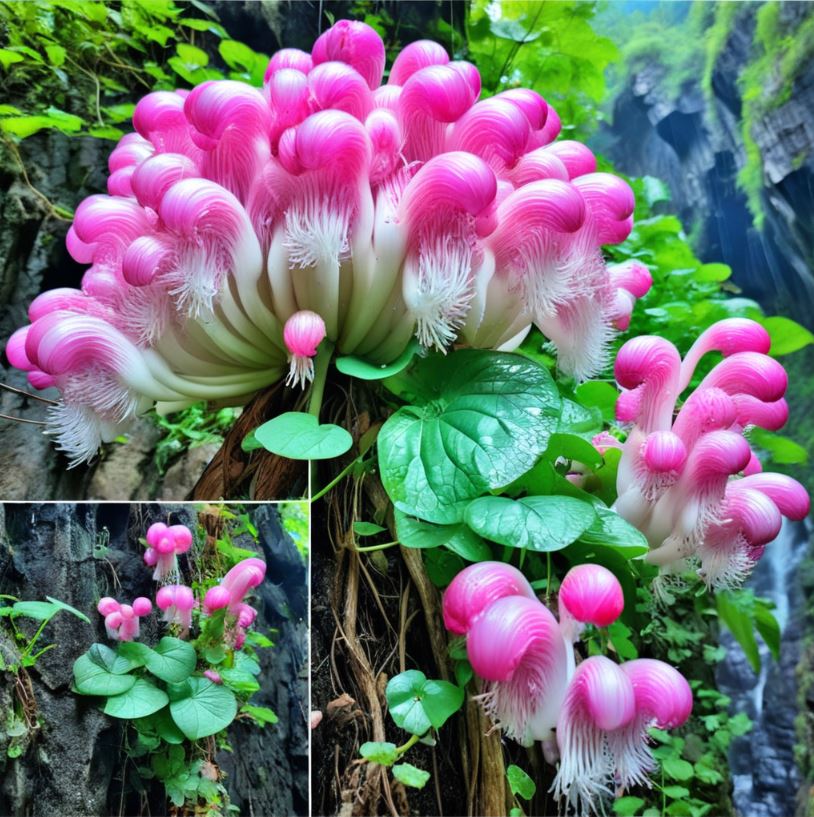
The Need for Responsible Content Creation
The proliferation of the mystical rock lotus on social media raises important questions about the responsibility of content creators. As platforms become increasingly visual-centric, there is a growing need for creators to be mindful of the impact their work can have on shaping public knowledge. This includes ensuring that visual representations are grounded in scientific facts, providing accurate information, and transparently distinguishing artistic interpretation from documented reality.
Fostering Critical Engagement with Online Content
In response to the rise of botanical myths on social media, there is a pressing need to cultivate critical engagement among viewers. Encouraging users to approach online content with a discerning eye, to question the sources and verify the claims, can help to combat the spread of misinformation. By fostering a culture of inquiry and fact-checking, we can empower individuals to navigate the landscape of botanical representations with a more nuanced understanding.
Implications of Discovering New Species
In contemplating the mystical rock lotus, one might also reflect on broader implications regarding biodiversity and conservation. If such a plant were found to exist, it could underscore the importance of preserving unique ecosystems where fragile species bold enough to grow in extreme conditions thrive. Would the discovery propel efforts to protect similar habitats? Or would it lead to exploitation fueled by commercial interest?
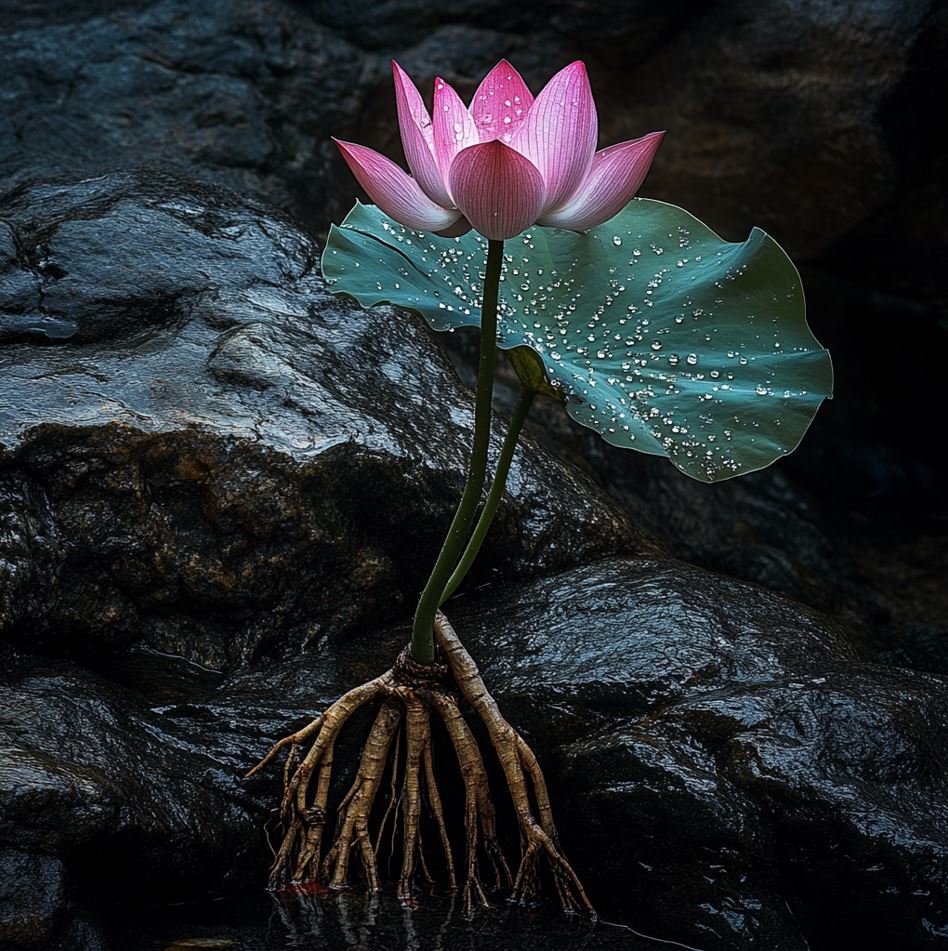
The Significance of Undiscovered Species
The potential discovery of the mystical rock lotus would have profound implications for our understanding of botanical diversity and the resilience of life on Earth. Such a finding would challenge our preconceptions about the limits of plant growth and adaptation, potentially revealing the existence of undiscovered species capable of thriving in the most inhospitable environments. This could inspire a renewed appreciation for the wonders of the natural world and the importance of preserving delicate ecosystems.
Conservation Considerations
If the mystical rock lotus were to be verified as a real species, its existence would likely prompt discussions about the need for targeted conservation efforts. The specialized adaptations required for a plant to grow in such rugged terrain would make it particularly vulnerable to threats like habitat destruction, climate change, and human interference. Protecting the unique environments where the mystical rock lotus may thrive would become a crucial priority, underscoring the broader importance of safeguarding biodiversity.
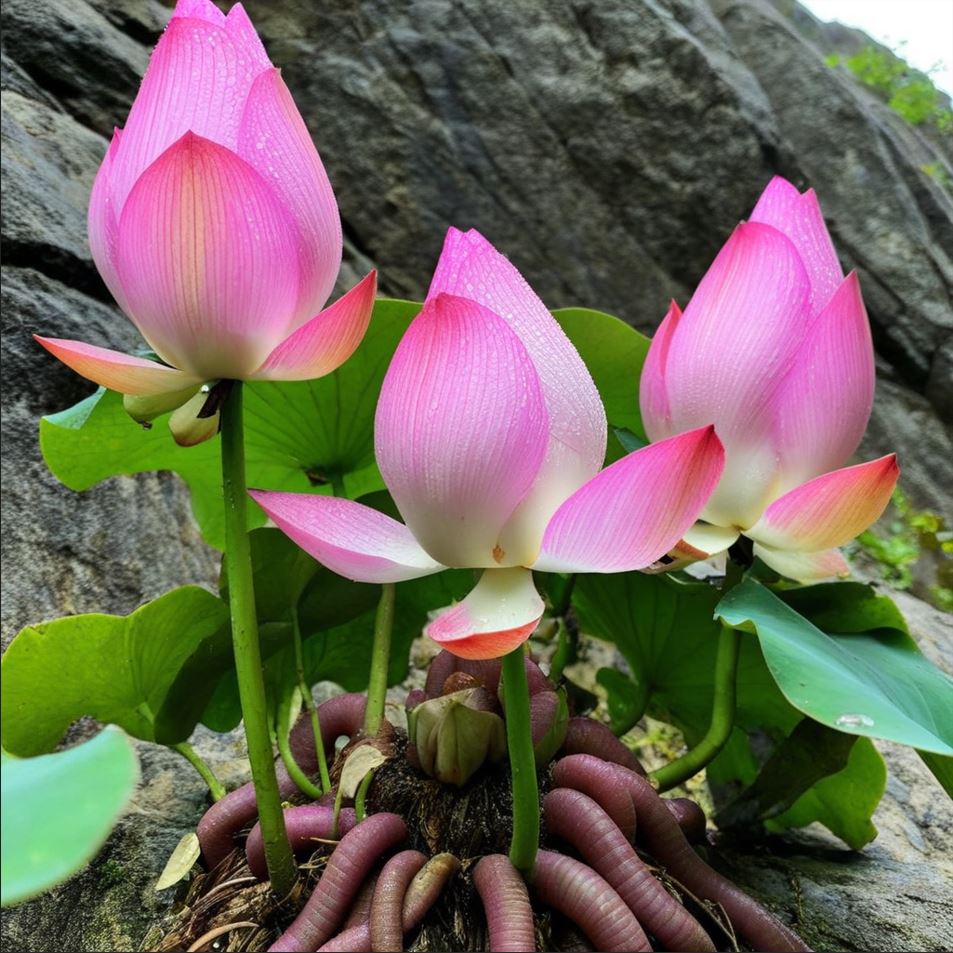
Balancing Preservation and Exploitation
However, the discovery of the mystical rock lotus could also present a double-edged sword. While its existence might inspire conservation initiatives, the plant’s allure and perceived rarity could also lead to increased commercial interest and exploitation. There would be a delicate balance to strike between preserving the natural wonder of the mystical rock lotus and the potential for its commodification and overexploitation. Addressing these complex issues would require a thoughtful, multifaceted approach that prioritizes ecological sustainability and the long-term protection of fragile species.
A Metaphor for Resilience
Ultimately, the mystical rock lotus serves as a metaphor for resilience, reflecting humanity’s tireless quest for beauty even in life’s roughest patches. It encourages contemplation of what we value in nature: Is it authenticity grounded in ecological facts, or is aesthetics and emotional resonance equally valid? Embracing both perspectives allows us to appreciate nature in its multifaceted glory while being vigilant against the allure of sensationalism. Through understanding and awareness, we can cultivate a more profound respect for the complexities of our natural world, bridging the chasm between myth and reality.
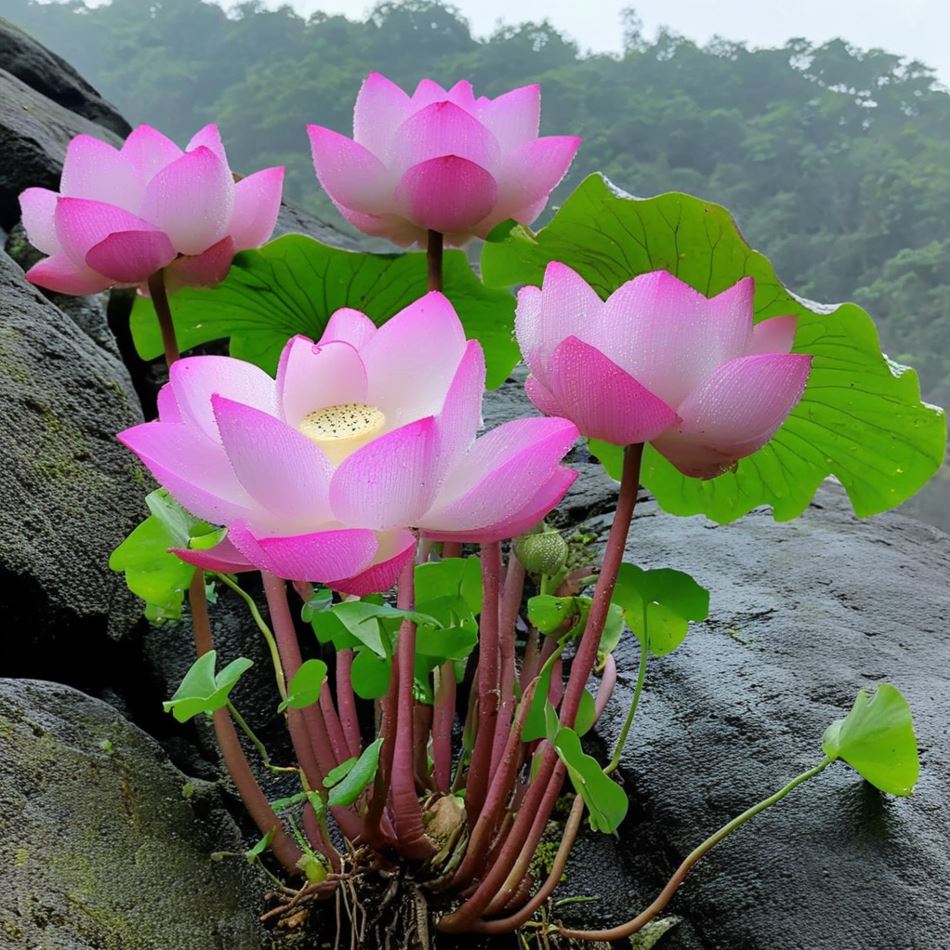
The Resilience of Life
The mystical rock lotus, with its purported ability to thrive in the harshest of environments, serves as a powerful symbol of the resilience and adaptability of life. Its very existence, if verified, would challenge our preconceptions about the limits of botanical growth and inspire awe at the tenacity of nature. This metaphor of resilience can be applied to various aspects of human experience, reminding us of the capacity for growth and perseverance, even in the face of adversity.
Balancing Fact and Fiction
As we grapple with the mystical rock lotus, we are confronted with the need to strike a balance between the allure of the aesthetic and the importance of factual accuracy. While the visual splendor of this plant captivates the imagination, it is crucial that we maintain a critical eye and seek to understand the true nature of this phenomenon, rather than succumbing to the temptation of sensationalism. By embracing both the emotional resonance and the scientific rigor, we can cultivate a more nuanced appreciation for the complexities of the natural world.
Fostering a Deeper Respect for Nature
Ultimately, the mystical rock lotus encourages us to develop a more profound respect for the natural world and its wonders. Whether this plant is a factual reality or a captivating myth, it serves as a reminder of the boundless creativity and resilience inherent in the ecosystems that sustain us. By approaching the natural world with curiosity, critical thinking, and a willingness to embrace both the known and the unknown, we can deepen our understanding and foster a greater appreciation for the complexities that define the living planet we call home.
